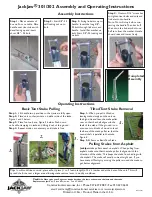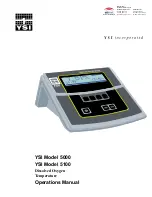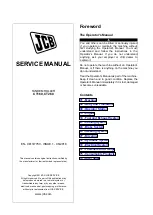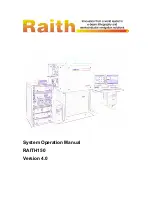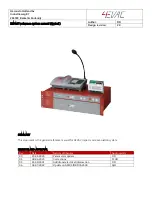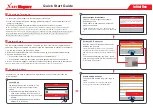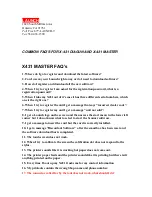
16
MODE: CURRENT WIND SPEED WITH BAROMETRIC AIR PRESSURE
Choice of air pressure measurement unit:
The air pressure can be shown in inHg (inches of Mercury) or hPa (hectoPascals,
the same as mb millibars) . To change the units press and hold the button for
approximately 4 seconds and the units will change . Release the button when the
desired units are displayed and the instrument returns to the mode of measuring
the instant wind speed with display of the air pressure . This setting will remain until
changed again, even after turning the Xplorer 4 off .
Air pressure explanation:
Barometric air pressure is the measurement of the weight of air in
the atmosphere above the measurement point . At higher elevations,
there is less air mass above, thus a lower pressure . Local atmospheric
pressure variations are an important aspect of weather . Low and High
pressure fronts develop and dissipate constantly, and are a major factor
in weather . Low pressure fronts generally bring cloudy and stormy
weather, while High pressure fronts bring clear, cool weather . Extreme
Low pressure fronts occur in centers of hurricanes and tornados .
The instrument offers 2 modes for displaying pressure: QFE pressure and QNH pressure . These two
abbreviations (QFE and QNH) are taken from the famous “Q” code . This code was instituted by the
London conference of 1912 . It is made up of a list of three letter indicators, valid for all the countries
of the world, used most often in the aeronautical world .
QFE:
Atmospheric pressure at ground level, also known as
absolute pressure
. This reading is not
adjustable, it is an absolute reading of the exact barometric air pressure .
QNH:
Atmospheric pressure obtained by calculation at sea level in standard atmospheric conditions,
also known as
relative pressure
. This is the pressure mentioned in meteorological bulletins or on the
television . This setting is calibrated according to exact altitude .
In the Northern hemisphere, winds
will rotate counterclockwise around
Low pressure fronts, and clockwise
around High pressure fronts. In the
Southern Hemisphere the directions
are reversed. While High pressure
generally involves clearing weather,
it can also bring strong winds.






















